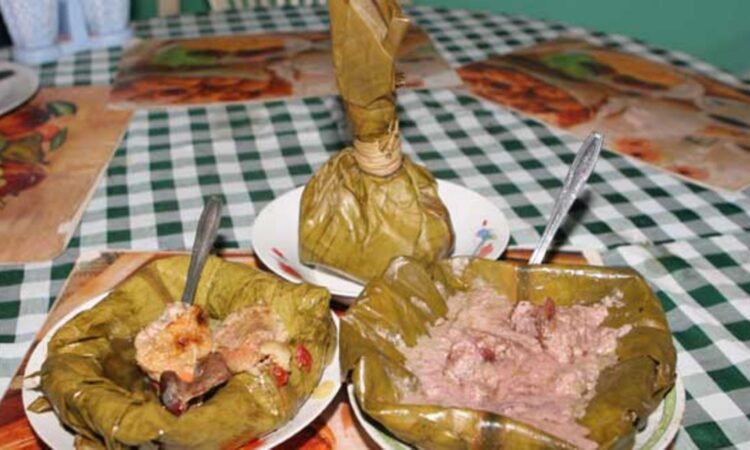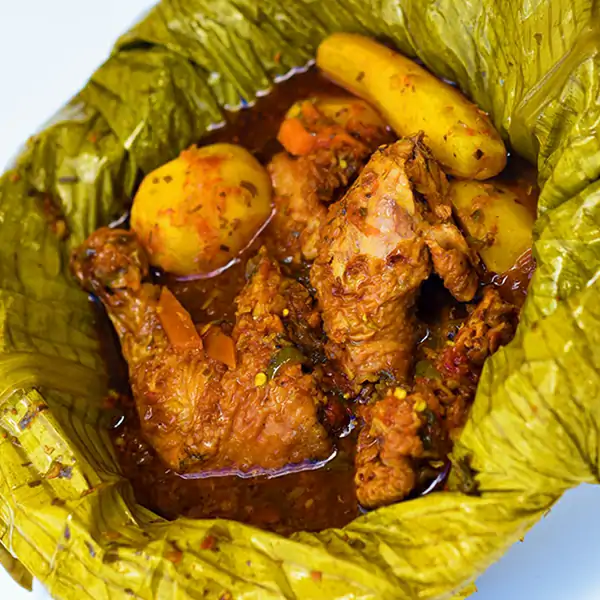
A Guide to Uganda’s Delicious Traditional Cuisine
A Guide to Uganda’s Delicious Traditional Cuisine: Uganda is a country of beautiful scenery, it is a multi-ethnical society and the same can be said of the food that is prepared in the country. Ugandan cuisine is a mix of different aromas and tastes of foods prepared with a variety of local food products, meat, and fish. Uganda’s food is as wholesome as the land it is derived from; from thick and fulfilling stews to rejuvenating beverages. In this guide, some of the most popular traditional foods that are eaten in Uganda are described to give the reader an idea of the kind of food that is found in the country.
The Staples of Ugandan Cuisine
The staple foods which Ugandan cuisine is based on include bananas, maize, millet and sweet potatoes. These staples are used as the foundation of several dishes and are usually taken with meat, fish or vegetable sauces.
- Matoke (Steamed Green Bananas)
Matoke, another name for matooke, is a simple dish based on green bananas, the bananas are peeled, boiled, and then pounded. This dish is more especially prepared in the central and the western parts of Uganda.
Preparation and Serving:
Matoke is usually prepared by first signing the bananas than steaming the bananas in banana leaves or a saucepan until they are done. The bananas are then mashed and it is common to add on sauce prepared from tomatoes, onions and sometimes peanut powder. Matoke can be taken with meat or vegetable sauce and is usually taken with most meals.
Flavor and Texture:
This dish has a rather neutral, slightly starchy taste and a rather soft, creamy consistency, which is why it is often used as a base for other dishes and sauces.
- Posho (Ugali)
Ugali also commonly referred to as posho in other parts of East Africa is a dense maize meal dish which is commonly consumed in Uganda. It is a dish prepared from maize meal formed by boiling the meal with water and producing a thick and semi-fluid mass.
Preparation and Serving:
To prepare posho, maize flour is slowly added to boiling water and stirred until it forms a mass that is neither liquid nor very solid and then it is molded into a loaf or served in pieces. Posho is usually taken with lots of side dishes such as beans, meat, or vegetable sauce.
Flavor and Texture:
Posho has a bland taste and a fairly tough, velvety surface. It is also a great side dish to other richer dishes as it provides a neutral background to the spices and other elements present in the sauce.
- Groundnut Sauce (Ebinyebwa)
There is groundnut sauce which is a peanut sauce, a delicious meal that is commonly prepared in Uganda and it is referred to as ebinyebwa. This thick and creamy sauce is complimentary to such staple foods as matoke, posho, and rice.
Preparation and Serving:
The groundnuts are usually roasted and then ground into a paste form, and this paste when boiled with water, onions, tomatoes and spices gives a thick sauce. It may be accompanied by the addition of vegetables, meat, or fish.
Flavor and Texture:
The sauce has a very nice and a strong nutty taste with a creamy and velvety texture. It is both delicious and healthy and therefore commonly served with many Ugandan dishes.
- Luwombo (Luwombo)
Luwombo is a meal that is commonly prepared in Uganda where meat, fish or even vegetables are cooked on a banana leaf. It is believed that this way of cooking enhances the prepared meals with special taste and smell.

Preparation and Serving:
In preparing luwombo, one can use chicken, beef or fish, mushrooms or vegetables; the food is first marinated with spices onions and tomatoes. The mixture is then put into fresh banana leaves and the whole thing is tied up. The parcels are then set on a steamer and steam until the vegetables are soft.
Flavor and Texture:
Banana leaves add a mild, natural taste to the food and steaming make the meat or vegetables soft and well seasoned. Usually, it is taken with other meals such as matoke, posho, or rice.
- Rolex (Rolled Eggs)
The “Rolex” is a general lunch which is a blend of omelet wrapped in a chapati. The name Rolex is derived from an abbreviation of the phrase ‘Rolled Oats and Rolex Eggs’.
Preparation and Serving:
In making a Rolex, a very thin chapati is fried on a griddle. Eggs, onions, tomatoes and cabbage (or other vegetables) are beaten and scrambled and then put on the chapati. The chapati is then encased round the omelet to form a readily accessible meal since it has been rolled out.
Flavor and Texture:
The Rolex is scrumptious and Rich, the Chapati is soft and warm which goes well with the Flavored and Crispy Omelette. It is usually taken as a fast breakfast or as a snack.
Unique Ugandan Beverages
Apart from the food, Uganda has other forms of meals that include local drinks that range from simple to complicated.
- Mwenge Bigere (Banana Beer)
Mwenge Bigere also commonly referred to as banana beer is a traditional alcoholic beverage commonly prepared in Uganda from bananas that are fermented with sorghum or millet.
Preparation and Serving:
Bananas are first mashed then combined with sorghum or millet flour and then fermented to make the beer. The fermentation process makes the drink to have a sweet taste with a touch of sourness. It is taken in local calabashes or glasses commonly used for serving traditional beverages.
Flavor and Texture:
Mwenge Bigere has a sweet taste with a fruity aroma though it is fairly moderate in alcohol content. This dish is commonly taken during parties and other forms of celebrations.
- Bushera (Fermented Millet Drink)
Bushera is an indigenous alcoholic locally fermented beverage prepared from millet or sorghum flour. It is a beverage that prefers in most regions of Uganda and it does not contain alcohol.
Preparation and Serving:
The flour prepared from millet/sorghum is mixed with water and left to ferment on its own. The whole process makes a beverage that has a slight sour taste and is quite famous for its invigorating effect; it may be sweetened with honey or sugar.
Flavor and Texture:
Bushera has a sour taste with a hint of acidity and a velvety mouth feel. It is usually drunk as a cool beverage, and particularly in hot weather.
- Waragi (Ugandan Gin)
Waragi is a traditional spirit of Uganda prepared from bananas, millet or cassava that is distilled. It is a strong spirit that is consumed especially during festivity and other social events.
Preparation and Serving:
The raw materials are first fermented and then distilled to give out Waragi. It is best taken neat, with water, or in cocktails.
Flavor and Texture:
Waragi has a robust and peculiar taste and is highly alcoholic. It is taken in small amounts and has become a symbol of Uganda’s culture.
Conclusion
Traditional food in Uganda is another way of discovering tastes, textures, and values of the local culture. From the soft matoke accompanied with delicious ground nut sauce to the well-known rolex and chilled bushera every dish reveals a taste of Uganda’s culture. When in Uganda, food is a must-have and it can either be bought from a busy market or from a restaurant. It is recommended to have a taste for these mouth-watering meals and drinks and feel the spirit of the Ugandan people through food.


